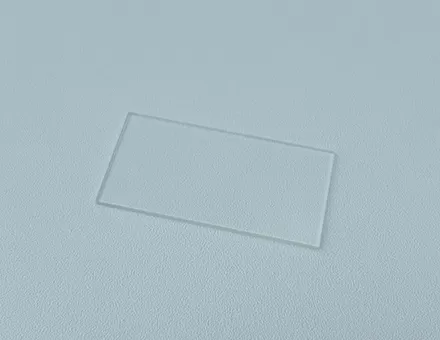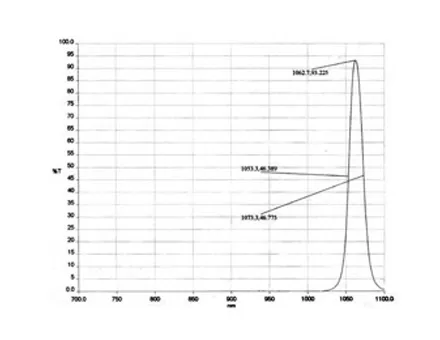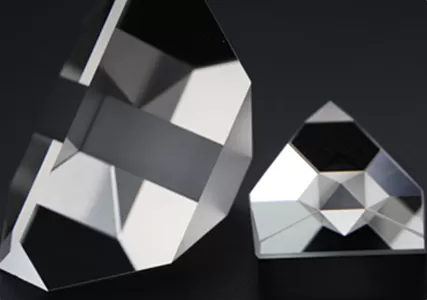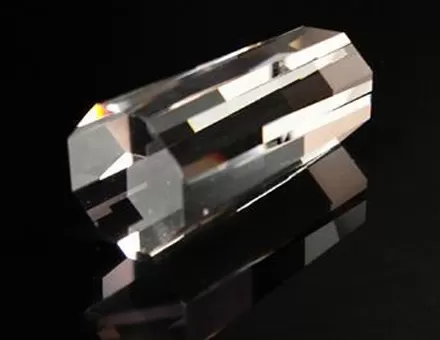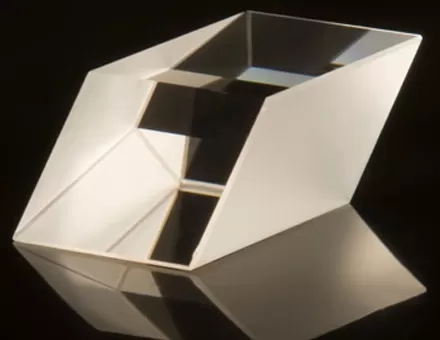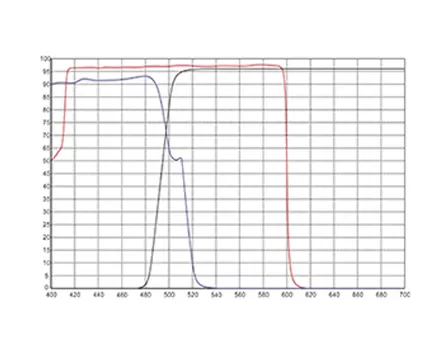Calcium fluoride (CaF2) crystals play an irreplaceable role in the high-end optical field due to their unique optical properties. Its core advantages lie in its deep ultraviolet transmission capability and optical isotropy (without birefringence), making it the preferred material in multiple key fields. The following are its main application directions:
Semiconductor lithography (core application)
Application scenarios: Projection objectives and illumination systems for DUV (deep ultraviolet) and EUV (extreme ultraviolet) lithography machines.
Key role:
Deep ultraviolet transmission: in mainstream DUV lithography (such as ArF excimer laser, 193nm; KrF excimer laser, 248nm), CaF2 is one of the few materials that can efficiently transmit these wavelengths (the transmissivity of fused silica drops sharply below 193nm).
Eliminating birefringence aberration: Optical isotropy is the core value of CaF2. Photolithography lenses require nanometer level resolution and extremely low wavefront aberration, and any polarization state changes and aberrations caused by material birefringence are unacceptable. The non birefringence property of CaF2 is crucial for this.
Thermal stability: Compared to some glasses, the thermal lensing effect of CaF2 under high-power lasers is relatively controllable (although its coefficient of thermal expansion is high, it can be managed through precision design and material combination).
Importance: Modern high-end lithography machine lenses are composed of dozens of highly polished lenses, among which CaF2 lenses account for a high proportion (especially in 193nm systems) and are one of the key materials for achieving the continuation of Moore's Law. Its purity and uniformity are required to reach the extreme (ppb level impurity control).
UV spectroscopy
Application scenarios: Core optical components for UV spectrophotometers, fluorescence spectrometers, Raman spectrometers (UV excitation), vacuum UV spectrometers, etc.
Key components:
Prism: As a dispersion element, especially in the analysis of wavelength lower than 200nm (such as 190nm, 185nm, or even as low as~150nm), CaF2 prism is a substitute for fused silica.
Lens: Used for focusing and collimating deep ultraviolet light.
Window: The observation window of the sample cell or vacuum chamber, which needs to transmit deep ultraviolet light.
Grating substrate: used for manufacturing transmissive or reflective gratings.
Advantages: Wide and deep UV transmission window (as low as~150nm), meeting the needs of short wavelength light for trace analysis, biomolecule (DNA/protein) detection, semiconductor material characterization, etc.
High power/UV laser system
Application scenarios: Optical components for excimer lasers (ArF 193nm, KrF 248nm, F2 157nm), some solid-state ultraviolet lasers, and femtosecond lasers.
Key components:
Output coupling mirror/cavity mirror: It needs to withstand high-power laser and maintain high transmittance or reflectivity.
Focusing/collimating lens: used for beam shaping.
Window: The sealed window of the laser cavity.
Prism pair/chirped mirror: used for pulse compression or broadening (utilizing its dispersion characteristics).
Advantages:
High damage threshold (relatively good).
Deep ultraviolet transmission capability (especially for 157nm F2 laser, CaF2 is almost the only choice).
Low nonlinear refractive index (important for ultrafast lasers).
The non birefringence property helps to maintain the polarization state and beam quality of the laser.
Precision microscopy
Application scenario: Research grade microscopes, especially:
Ultraviolet microscopy: using ultraviolet light to improve resolution (resolution is inversely proportional to wavelength) or to excite specific fluorescent markers.
Polarization microscopy: It is necessary to eliminate false signals introduced by the birefringence of optical components themselves.
Confocal/super-resolution microscopy: high-end objective lens components.
Key components: front lens group of objective lens, condenser lens, special filter substrate.
Advantages: Deep ultraviolet transmission improves resolution;
Optical isotropy ensures imaging fidelity and avoids polarization aberration.
Infrared optics
Application scenarios: Mid infrared (MIR,~2μm-8μm) spectrometer, thermal imaging system, laser guidance.
Key components: lens, window, prism (as a dispersive element).
Advantages: Good transmittance in the 2-8μm wavelength range (superior to many infrared glasses), good chemical stability, and non hygroscopicity (superior to alkali metal halide crystals such as NaCl and KBr).
Limitations: It is not the optimal or only choice in the infrared band and faces competition from materials such as BaF2, ZnSe, Ge, etc. However, it still has applications when it is necessary to balance the wide spectral range from ultraviolet to infrared or specific mechanical/chemical properties.
Astronomical instruments
Application scenarios: lenses in space telescopes, high-resolution spectrometers, calibration plates.
Advantages: Wide spectral transmission (from UV to IR), good uniformity, stability (suitable for space environments). The non birefringence property is particularly important for polarization measurement instruments.
Other special applications
Ellipsometer: A deep ultraviolet ellipsometer used for measuring semiconductor thin films requires a CaF2 window and lens.
Synchrotron radiation beamline: a window or refractive optical element that requires transmission of extreme ultraviolet/X-ray radiation (utilizing its low refractive index).
Photomask protective film: (studied historically but not mainstream).
Summary of the core advantages of CaF2
1. The king of deep ultraviolet transmission: the lower transmission limit can reach 150-160nm (ultrahigh purity crystal), filling the gap below fused silica (~180-190nm).
2. No birefringence: Cubic crystal system, optical isotropy, crucial for polarization control and aberration elimination (especially in photolithography and precision microscopy).
3. Wide spectrum: covering a continuous transmission window from vacuum ultraviolet (VUV), ultraviolet (UV), visible light (VIS) to mid infrared (MIR).
Challenges and limitations faced
Extremely high cost: Growing large-sized, highly uniform, ultra-high purity, defect free optical grade single crystals is extremely difficult and expensive.
Mechanical properties:
Low hardness (Mohs hardness 4): Highly susceptible to scratches, requiring extreme care during processing, cleaning, and assembly.
Strong cleavage: prone to cleavage fracture along the {111} plane, and crystal orientation must be considered in design and processing.
Thermal performance: The coefficient of thermal expansion is relatively high (~19 × 10 ⁻⁶/K), and the thermal conductivity is average (~9.7 W/m · K). In applications with high thermal loads, careful management of thermal effects is required.
Processing difficulty: Soft brittleness and cleavage make grinding, polishing, and coating more difficult than glass.
Conclusion
CaF2 is a strategic material in the high-end optical field, especially in the deep ultraviolet band and key applications that require the elimination of birefringence. Despite its high cost and difficult processing, its unique advantages in deep ultraviolet transmission and optical isotropy make it irreplaceable in fields such as semiconductor lithography (supporting modern chip manufacturing), cutting-edge spectroscopic analysis, high-power ultraviolet laser systems, and precision imaging. With the development of technology towards shorter wavelengths (such as EUV lithography) and higher precision, the demand for high-quality calcium fluoride crystals will continue.
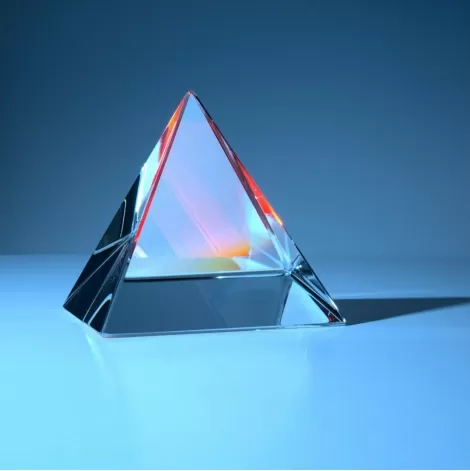

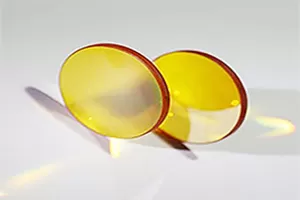
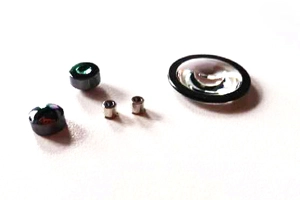

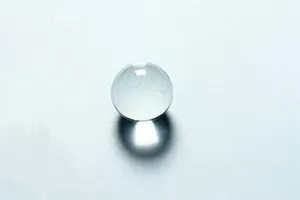
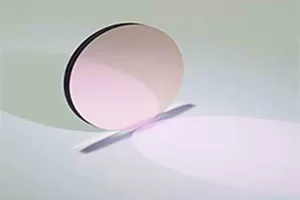
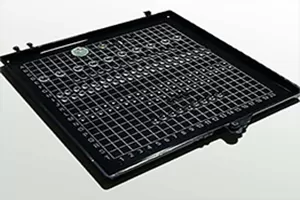

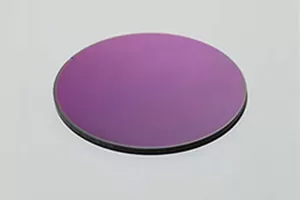
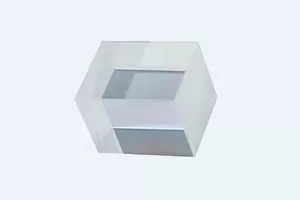
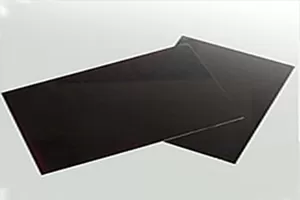
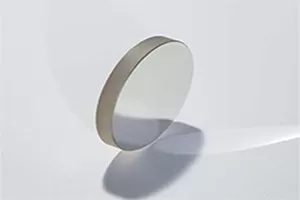
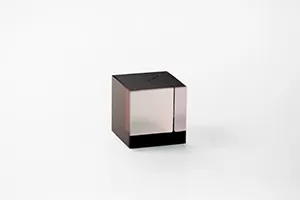
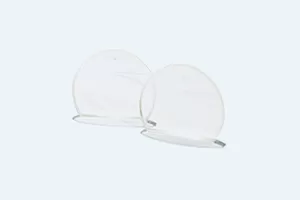
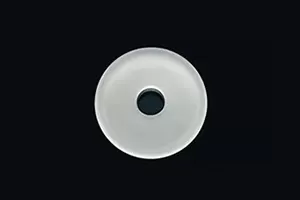
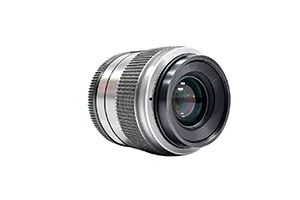
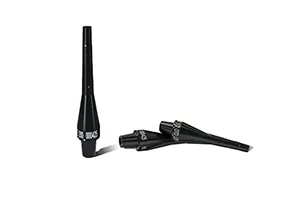
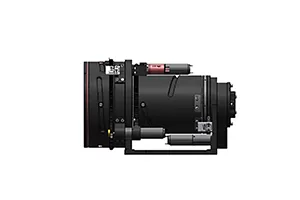
 EN
EN

